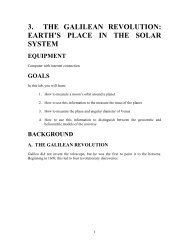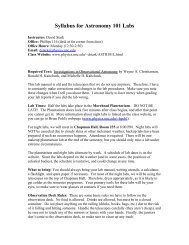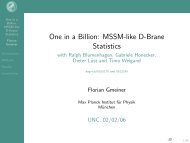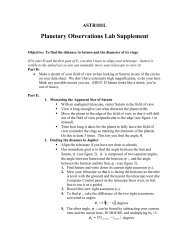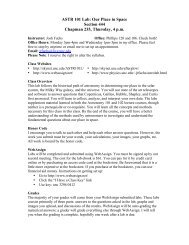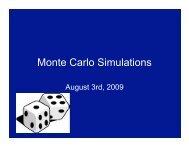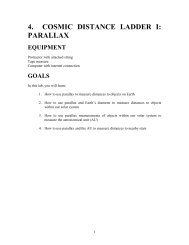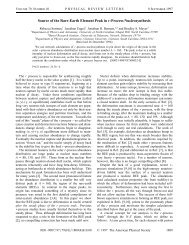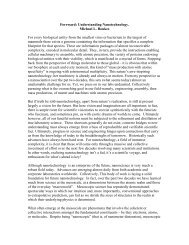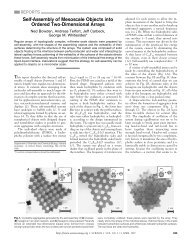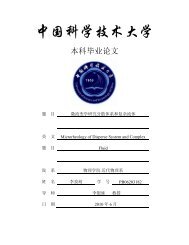Topics in Statistic Mechanics
Topics in Statistic Mechanics
Topics in Statistic Mechanics
You also want an ePaper? Increase the reach of your titles
YUMPU automatically turns print PDFs into web optimized ePapers that Google loves.
Adv. Sta. Phy. Homework 4 Quantum Is<strong>in</strong>g model Li,Zimeng PB06203182<br />
Consider<strong>in</strong>g a quantum mechanical d dimensional system, we def<strong>in</strong>e the time-evolution<br />
operator<br />
Now take the time difference between t' and t to be <strong>in</strong>f<strong>in</strong>itesimal, and we can write the<br />
transition amplitude between via the Feynman path <strong>in</strong>tegral<br />
The above path <strong>in</strong>tegral language is based on the Suzuki-Trotter formula (see Sec.3). We<br />
can use it <strong>in</strong> quantum field theory to solve quantum Is<strong>in</strong>g cha<strong>in</strong> problems. A most<br />
common method is the Landao G<strong>in</strong>zburg Wilson method or LGW method. In Sec. 1.2, we<br />
have given a simple description of states when and . In order to discuss<br />
phenomena around the critical po<strong>in</strong>t, we have to turn to region of .<br />
Follow<strong>in</strong>g the LGW strategy, we have to first identify an order parameter, which<br />
dist<strong>in</strong>guishes the two very different ground phases described <strong>in</strong> Sec.1.2. This order<br />
parameter is just ferromagnetic moment (see Sec.1.2). Us<strong>in</strong>g coarse gra<strong>in</strong> strategies<br />
<strong>in</strong> RG method,we coarse-gra<strong>in</strong> these moments over some f<strong>in</strong>ite averag<strong>in</strong>g region, and at<br />
long wavelengths this yields a real order parameter field a measure of the local<br />
average of as def<strong>in</strong>ed <strong>in</strong> Sec.1.2.<br />
The second step of LGW method is to write down a general field theory for the order<br />
parameter.As we are deal<strong>in</strong>g with a quantum transition,the field theory has to extend<br />
over spacetime, with the temporal fluctuations represent<strong>in</strong>g the sum over histories <strong>in</strong><br />
the Feynman path-<strong>in</strong>tegral approach. Thus we will write down (2.1) as the needed field<br />
theory, with the Hamiltonian replaced by the Landao G<strong>in</strong>zburg Wilson Hamiltonian. We<br />
shall note that the <strong>in</strong>tegration above is d+1 spacetime (+1 is the time dimension)<br />
dimensional where Is<strong>in</strong>g model corresponds to d=1 case, although it is a d dimensional<br />
quantum model.



